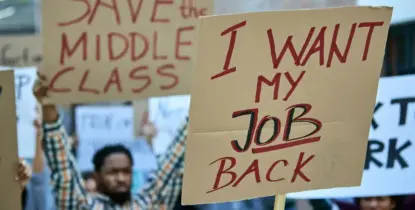
Payday Loans for Students and Their Alternatives
13 Min Read
- Key takeaways
- Why do students use payday loans?
- How do student payday loans work?
- The cost of student payday loans
- Common requirements for student payday loans
- How to apply for a payday loan at a store
- How to apply for a payday loan online
- Loan alternatives for students
- Ways to lower the cost of your loan
- What to consider before obtaining a payday loan
- 7 more ways to get emergency money
- Bottom line
- FAQ
Key Takeaways
- Student payday loans provide fast access to cash but require a lump-sum repayment within 14 to 30 days and carry high APRs.
- Rollovers and repeated borrowing drive up the total cost, which often results in debt cycles and owing more in interest than you’ve initially obtained.
- On-time payday loan repayment doesn’t contribute to your credit score, while delinquencies and collections may affect your FICO rating.
- Safer borrowing options for students include school emergency funds, federal student loans, private student loans, credit union payday alternative loans, personal loans, and loans via cash-advance apps.
Many students manage inconsistent budgets that fluctuate from month to month. With all these tuition, textbooks, and other related costs, you may find yourself unable to cover daily expenses while your next pay is still a long way off.
In urgent situations, payday loans may seem the only option available to students with limited or bad credit histories. However, you need to approach them cautiously due to their high APRs and short repayment terms. In this guide, we will explain student payday loans and provide safer alternatives to consider first.
Why Do Students Use Payday Loans?
Many students have limited credit histories and inconsistent earnings, which makes it difficult to obtain quick approval from traditional lenders. Payday loans provide quick assistance for immediate needs without the need to save money or establish a strong credit profile. This makes payday loans a great option for the most common emergencies students often face:
- Rent and utilities
- Textbooks and course materials
- Transportation or car repairs
- Medical costs
- Program or lab fees
- Laptop or phone replacement
- Small past-due tuition or housing balances that block registration
How Do Student Payday Loans Work?
Student payday loans offer a small lump sum, typically under $1,000. The caps mostly depend on your state’s regulations. The borrower agrees to repay it in full with a flat fee in 14 to 30 days. The money is usually provided on the same or the next business day. No hard credit check is required, as lenders are more focused on a borrower’s ability to repay. This makes it possible to get emergency loans for students even with bad credit scores.
The Cost of Student Payday Loans
Student payday loans usually have high interest rates. The average fee is about $10 – $30 for every $100 borrowed. This translates to an APR of 260% to over 700%. Most college payday loans are expected to be fully repaid within 30 days.
Extending the loan or borrowing again increases the total cost, since each new rollover adds another fee. As a result, you may end up owing even more in interest than you’ve initially borrowed. Only take out a payday loan if you are sure you can repay it on time.
Common Requirements for Student Payday Loans
Most lenders require you to meet certain age and residence criteria and provide documents that verify a steady income. Common qualification requirements are:
- Age 18 or older
- U.S. residency
- Steady monthly income (part-time jobs or gig work are typically considered)
The exact eligibility rules may differ by product and loan provider. Read the criteria carefully before submitting your application.
Required documents
Here are the documents you typically need to provide to support your application:
- Government ID
- Proof of address
- Proof of income
- A working mobile phone number and an email
- An active checking account in your name
- Student ID card or enrollment verification, if requested
How to Apply for a Payday Loan at a Store
Sometimes, taking out a loan in person is more convenient. You get your money as soon as you’re approved and sign the agreement. Here’s how to apply in-store:
Step 1. Decide on the lender
Compare pricing and terms across nearby locations. Make sure the company you choose is reputable and has a proper license to operate in your state.
Step 2. Prepare documents
Bring a government-issued ID, your most recent bank statements, and a post-dated personal check for repayment.
Step 3. Submit application
Complete a brief loan request form at the location and wait for approval. In most cases, the decision is made in minutes because no hard credit check is performed.
Step 4. Get your funds
If approved, review the loan agreement to understand the APR, total fees, and the repayment period. If the terms suit you, sign the documents and get cash against a post-dated check.
How to Apply for a Payday Loan Online
Getting a small payday loan online is simple and convenient since you can do it from the comfort of your home. Yet, the funding may take up to two business days. Here are the application steps:
Step 1. Decide on the online lender
Compare rates, fees, and funding speed across reputable providers. Verify the lender is licensed in your state, has a good reputation, and protects your sensitive data.
Step 2. Complete application
Apply on the lender’s website. Provide identity details, income information, and your bank account and routing numbers.
Step 3. Review decision
Many providers issue a decision within minutes after a form is submitted. You will typically get a push notification or an email.
Step 4. Get your funds
If approved, your money will be deposited directly into your bank account, often within 1 business day. Funding times depend on the lender, your bank, and processing speed.
Loan Alternatives for Students
Payday loans are not your only option. Here are some alternatives for students:
Cash advances for students
Cash advance apps for students are used when you need $50 to $250 for a short period and want to save money on interest. The application process is simple: you complete a simple form on your device and link your bank account to verify your monthly income. Many providers use only a soft credit check and set no minimum credit score requirements. Repayment is made automatically via an ACH debit on your next pay date, typically within about 30 days.
Credit card cash advances
A credit card cash advance allows you to withdraw money from your card at an ATM or through the card issuer. No separate loan application or new credit check is required.
You can get up to your card’s cash-advance limit – often about 30% of the total credit line. Interest accrues the same day, with no grace period, and the APR is typically higher than that on a regular purchase.
Small-dollar loans from credit unions
Payday Alternative Loans (PALs) are small loans offered by credit unions as a regulated, lower-cost alternative to payday loans. You must be a member of a credit union to apply.
CUs conduct a hard credit check and report your payment history, which can help you build credit over time. Loan sizes usually range from $100 to $2,000. You are expected to repay the PAL over a period of up to 12 months in equal monthly installments.
Unsecured personal loans
Unsecured personal loans cover a wide range of needs and don’t require collateral. These loans always involve a hard credit check to evaluate your credit history, monthly income, and debt obligations.
Borrowing limits vary from $1,000 to $50,000. The repayment is made in equal monthly installments over a period of 12 to 84 months. Good credit and a steady income are typically required. On-time payments can help you build credit over time.
Secured personal loans
Secured personal loans provide financing against collateral, such as a house, vehicle title, or savings account balance. It results in more favorable terms and rates, as well as increased approval chances. Yet, you risk losing your property in case of default. Loan amounts typically range from $1,000 to $100,000.
The limits are based on your income and the value of your collateral. The loan is repaid through fixed monthly payments over a period of 12 months to 10 years. Use the Personal Loan Calculator to preview your payment amount and lifetime cost for a personal loan before applying.
Federal student loans
Federal student loans help cover tuition and other education-related expenses. They are backed by the government and come with standardized terms. You can complete the FAFSA each year to determine eligibility, the type, and the amount of aid.
Direct Subsidized and Unsubsidized Loans, PLUS Loans, and Direct Consolidation Loans are the common federal student loan options. Use the Federal Student Aid Loan Simulator to test monthly payments and compare IDR plans before you borrow.
Private student loans
Private student loans can help you cover education costs if federal aid and scholarships are not enough for your needs. A hard credit check, as well as an assessment of your credit score and monthly income, is mandatory.
Many students add a creditworthy cosigner to qualify or get a lower APR. Use a Student Loan Repayment Calculator to preview the monthly bill and total cost at different rates.
Emergency student loans and funds from colleges
Many colleges provide short-term emergency loans to help enrolled students cover unexpected expenses. These programs aim to keep them on track through small crises, not to provide long-term financial assistance.
The amount you can get typically ranges from $500 to $1,500 and is tied to documented, verifiable need. Funds may be credited to your student account or paid out directly for eligible expenses. Repayment windows are usually up to 90 days.
Loan Comparison Table to Help You Decide
| Product | Amount | Cost | Repay | vs. Payday Loan |
|---|---|---|---|---|
| Payday Loan | $100–$1,000 | ~$15 per $100, ~391% APR | Lump sum on payday | — |
| Cash Advance App | $20–$500 | Usually free; tips/subscription; some >400% | Autopay on deposit. | Often cheaper |
| Credit Card Cash Advance | Up to 30% limit | ~25%–30% APR + fees, interest daily | Monthly minimums | Cheaper if repaid fast |
| Credit Union PAL | $200–$2,000 | 28% APR + up to $20 fee | Fixed monthly | Far cheaper |
| Unsecured Personal Loan | $1k–$50k | ~6%–36% APR + origination | Fixed monthly | Usually cheaper |
| Secured Personal Loan | $1k–$100k | ~6%–36% APR + origination | Fixed monthly | Cheaper; risk collateral |
| Federal Student Loan | $5k–$20k | ~5.5%–8% APR | Fixed/variable monthly | Much cheaper |
| Private Student Loan | $5k–$300k | ~4.1%–18.5% APR + origination | Fixed/variable monthly | Often cheaper; good credit needed |
Ways to Lower the Cost of Your Loan
There are a few ways to reduce the total cost of borrowing:
- Build strong credit. It’s not an immediate solution, but it will allow you to access better loan products with more favorable rates and approval chances in the future.
- Borrow smaller amounts. Small personal loans often come with lower APRs as they pose less risk to a lender.
- Choose a secured loan over an unsecured option for a lower interest rate.
- Add a cosigner for personal or private student loans. Ensure that both parties understand their responsibilities.
- Try to repay early. This will result in significant savings. Many personal and student loans have no prepayment penalty.
- Set up automatic payments. Most lenders offer small rate discounts for autopay that result in significant savings in the long run.
What to Consider Before Obtaining a Payday Loan
Don’t rush to borrow. Consider these things before you get a payday loan:
Search for Safer Alternatives
Payday loans are easy to get, even with a bad credit history. Yet, triple-digit APRs can be particularly challenging for students to manage.
Know How Repayment Works
The repayment process for payday loans is usually automatic. Ensure you have enough money in your balance before the due date to avoid overdue fees. Visit the Payday Loan Calculator to estimate your payment and the total cost of the loan.
Get Ready for Missed Credit Opportunities
Payday lenders usually don’t report your payments to credit bureaus. Yet, they may report all your overdues. If you want to build your credit, consider personal and student loans, and pay them on time.
Treat “Guaranteed Approval” as a Warning Sign
Legitimate lenders always assess your ability to repay before giving you a loan. If they promise you “a guaranteed approval” just as is, that’s probably a scam.
Check the Lender’s Reputation
Verify the state license, read recent reviews, and look for unresolved complaints on the regulator’s site.
Assess Your Financial Situation
Determine the exact amount you need, check how it aligns with your next deposits, and establish a clear repayment plan that doesn’t compromise essential expenses.
7 More Ways to Get Emergency Money
You can get through an emergency without taking on debt. Yet, it may require more time and effort. Consider these alternatives:
- Borrow from friends or family. Explain your situation and ask your loved ones for help. This kind of borrowing may carry no interest, yet it can put the relationship at risk. Be responsible and prioritize on-time repayment.
- Organize a sale. Use a community marketplace app to sell unneeded items, clothes, or books.
- Ask your school about emergency funds. Many schools provide support to enrolled students during a crisis. Use the College Board Net Price Calculator to estimate your net price and the possible amount of aid.
- Benefit from 0% APR offers. If you have a credit card with a promotional APR, using it responsibly can be cheaper than resorting to a high-cost loan. Just make sure you can repay the funds within the grace period.
- Reach out to local nonprofit organizations. Community services may provide budget counseling, hardship aid, or a one-time payment toward rent or utilities. Visit 211.org to find available programs.
- Establish a payment plan. Ask your landlord, utility provider, or the bursar’s office for an installment plan or extension. This may remove the need for high-cost debt.
- Find short-term employment or online gig work that you can balance with classes.
Bottom Line
Student payday loans provide quick access to funds, but their fees are quite high. Review lower-cost options first: credit union PALs, school emergency funds, personal loans, or cash-advance tools. If a payday loan is your only option – borrow only what you need, verify the due date, and have a clear repayment plan.
FAQ
How do I get a loan without a cosigner as a student?
If you need money for education-related costs, begin with federal loans for undergraduates. They do not require a cosigner or a credit check. If you’re looking for a way to cover daily expenses, consider a payday loan or a cash advance app.
What is the best emergency loan for students?
Emergency student aid offered by colleges is one of the most suitable options if you face a qualified need. Alternatively, consider a payday loan, a credit union PAL, or an interest-free loan from a cash advance app.
How much money can I get with a payday loan?
Payday loans usually range from $100 to $1,000. The exact limit depends on state law and the lender’s policies.
Can I extend the loan repayment?
Many lenders call this option a “rollover”, and it comes with an additional fee. Some states limit or ban rollovers. Contact your lender before the due date to find out whether it offers extensions. In some cases, you may be eligible for a flexible payment plan.
How do I repay a payday loan?
The lender usually cashes the post-dated check or initiates an ACH withdrawal from your bank account for the entire amount. Ensure the funds are available in your balance on the due date.
What happens if I miss a payment?
As the repayment is automatic, the lender will attempt to debit your account on the due date and charge NSF fees if the balance is not sufficient. The account can also move to collections, which may appear on your credit reports. Contact the lender early to request hardship assistance or an extended payment plan.
Need Money Urgently?Apply



